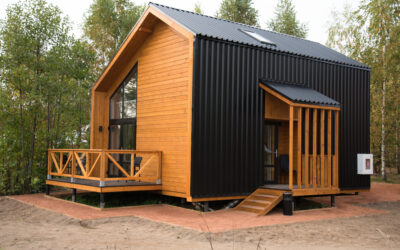What are the tax and investment considerations for a Granny Flat above versus a Tiny Home below? Income Tax Return Reporting - Income Streaming Tiny Homes Tiny home ownership does not have to follow the ownership interest of the underlying property ownership. For...
Business Is Profitable But I’m Always Running Out of Cash?
 Business is profitable on paper, however there’s No cash flow? No money? Need to make more money? Virtually every business owner asks how can I get more cash for my small business.
Business is profitable on paper, however there’s No cash flow? No money? Need to make more money? Virtually every business owner asks how can I get more cash for my small business.
There are a few reasons that small businesses struggle with cash flow. Bad Loan Structures, and Lack of Working Capital
No Profits
I’m shocked at how few small business know they’re profit requirements – break even point – to keep the doors open.
Break Even Point
For starters, every business should know what their break even is for each day they’re open. In other words, how much in sales do you need to do each and every day that you’re open to cover your costs. The classic computation is taking your overhead for whatever period you’re measuring (e.g. day) and dividing it by your gross margin/profit percentage. For instance if your daily overhead is $1,000, and you make 40% on average with each sale, then your days break even is $2,500 in sales.
Business Overheads Calculation
Small businesses may include more items in “overhead” than others for simplicity’s sake. Labor costs generally are considered a cost of goods sold when computing your gross profit/margin, but in reality your staffing probably can’t be changed as rapidly as other expenses. Likewise, I suggest small business owners include their own salary requirements and debt servicing ( loan repayments) in the overhead number. This gives you a truer picture of your cash sales number requirement.
Bad Loan Structures
Generally it’s when fixed assets are financed with working capital. For instance, using a line of credit or credit cards to buy equipment. You want to match the maturity of your debt as closely as you can to the lives of the assets. In other words, if the debt is going to come due before the asset has lost it’s usefulness, then you run into a cash problem.
Consolidation of loans can also make a difference. By combining several loans into one, you have more leverage with a lender, and can obtain preferential terms.
Lack of Working Capital
Working capital is simply the difference between your current assets and current liabilities. Technically the definition of “current” is less than one year, but with small businesses that often is not the case. Current liabilities may be actually due in as little as 30 days. When you don’t have enough working capital, you’re going to have troubles. The two major culprits I find in lack of working capital are accounts receivable and inventory, although they certainly are not the only possible suspects.
Accounts receivable becomes a problem when there is no credit policy and accounts are not timely paid. I see many small business that a keen to pay their bills (Accounts Payable) however are to relax in chasing their accounts receivable, only ties up more cash – working capital. Stock is also an issue when owners purchase too much and/or don’t dump old inventory. The longer Stock sits on in the warehouse, the work cash – working capital is tied up or as accountants like to call – cash lock up.
A businesses’ working capital requirement is simply:
| How long to collect receivables | Days waiting to collect Receivable |
| How much inventory | Days sits in our warehouse Inventory |
| Less: How long to pay vendors | Less: Days waiting to pay our purchases |
| Working Capital Cycle | Working Capital Need |
Please contact us to see how we can work together to improve your cash flow.



